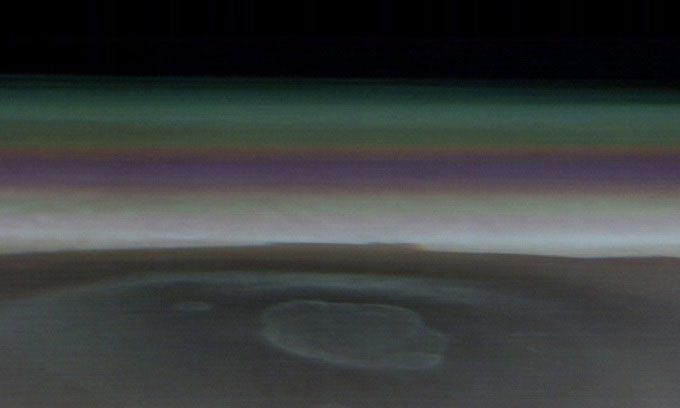The camera aboard the Odyssey spacecraft captured a panoramic image of Olympus Mons, a 27 km high volcano on Mars.
NASA’s Odyssey spacecraft, the longest-operating mission on Mars, made its 100,000th orbit around the Red Planet on July 1. To celebrate this milestone, NASA shared a panoramic image of Olympus Mons, the tallest volcano in the Solar System, taken by Odyssey in March. The base of the volcano extends 600 km near the Martian equator, while its summit rises 27 km above the thin atmosphere of the planet. Astronomers have discovered that morning frost covers the summit of the volcano for several hours each day, providing new insights into how ice circulates from the polar regions on this barren planet.

Olympus Mons as captured by the Odyssey spacecraft. (Image: NASA).
In the latest image of the volcano from Odyssey, a bluish-white band across Olympus Mons reveals the amount of dust suspended in the Martian atmosphere at the time of capture, according to NASA. The thin purple layer above the volcano is likely a mixture of atmospheric dust and clouds containing water ice with a bluish tint. The blue-green layer at the top marks clouds containing water ice that reach heights of about 48 km above the Martian surface.
To capture the panoramic image, scientists directed the Odyssey spacecraft to rotate slowly, allowing the camera to point towards the Martian horizon, similar to how the International Space Station photographs Earth. “Typically, we see Olympus Mons as narrow strips from above, but by orienting the spacecraft towards the horizon, we can see just how immense the mountain is in relation to the surrounding landscape in a single image. This photo is not only spectacular but also provides unique scientific data,” shared Jeffrey Plaut, a scientist on the Odyssey project at NASA’s Jet Propulsion Laboratory (JPL) in California.
By capturing numerous similar images at different times of the year, scientists can study how the Martian atmosphere changes across the four seasons, each lasting from 4 to 7 months. They noted that preparations for the latest image began in 2008 when another NASA mission, named Phoenix, landed on Mars. When Odyssey, acting as a relay between the lander and Earth, pointed its antenna at the Phoenix spacecraft, the research team realized that its camera could observe the Martian horizon.
The Odyssey mission was launched in April 2001 and is managed by JPL. It was NASA’s first successful mission to Mars after two previous failures. In 1998, the Mars Climate Orbiter burned up in the Martian atmosphere after engineers mixed up data between two measurement systems. A year later, the Mars Polar Lander crashed into the Martian surface due to an abrupt engine shutdown before landing.
Odyssey entered orbit around Mars in October 2001, revealing reserves of water ice beneath the planet’s surface that future astronauts might access. The spacecraft also mapped the surface of the Red Planet, including impact craters, helping astronomers understand Mars’ history.
The recent milestone of 100,000 orbits means the spacecraft has traveled 2.2 billion kilometers. The solar-powered spacecraft does not have a fuel gauge, so the mission team relies on computational skills to estimate the remaining fuel. Recent calculations indicate that Odyssey has about 4 kg of propellant left, sufficient to extend the mission until the end of 2025.





















































